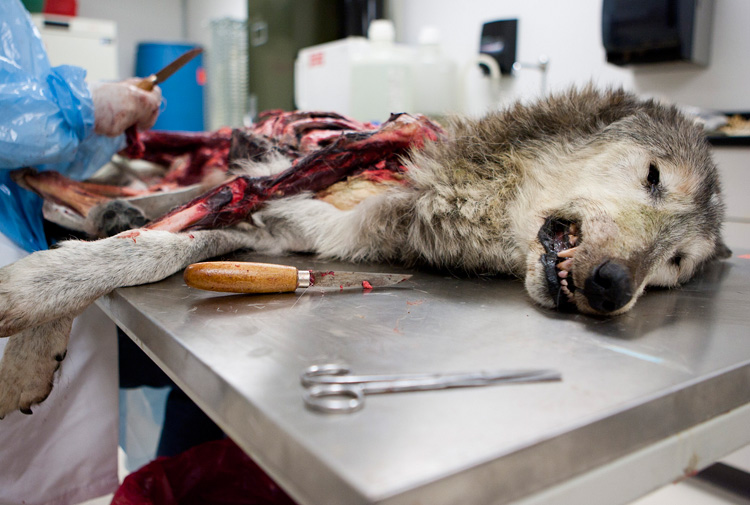In the basement of the Yale Peabody Museum, a wolf lay on a stainless steel table. Its lips were pulled up into a snarl, an intimidating predator even in death. On the floor was a rivulet of dried blood: evidence of the wolf’s recent thawing.
As Alexandra Neinast and Kristof Zyskowski discussed the best way to strip the wolf down to its skeleton, I set up my camera, ready to document the process. For the next 10 hours (with a break for lunch), Neinast would methodically remove the fur, muscle, and organs from the wolf’s frame. Once her grisly task was complete, the wolf would go into a tank full of dermestid beetles in the adjacent “Bug Room.” These beetles, well known by natural history museum curators the world over, are kept for their flesh-eating proficiency. They consume the remaining soft tissue that clings to the skeleton.
This was the first wolf that Neinast had ever dissected, but she took it in stride. “Working in the museum, I’m never really doing the same thing,” she says. “One day it’ll be taking the skin off of eight armadillo heads, the next it’ll be organizing the rodent collection… every day it’s something different.”
Museums such as the Peabody have many more specimens than what they show off to the public. They maintain vast collections of specimens—skeletons, of course, but also fully-preserved animals, dried plants, and various creature parts, from tusks to internal organs. This wolf, which died at the nearby Beardsley Zoo and was given to the Peabody, will be just another part of that collection. But this is no macabre assortment of dead things: museum collections provide data for a multitude of research projects, from dental morphology of sloths to the evolution of beauty. They are vital sources of data for evolutionists, taxonomists, and even artists.
Neinast suggests that this wolf may someday provide another data point for research comparing wolf anatomy, or on the morphological differences between wild and captive wolves. Until then, it will join the thousands of other earthly remains carefully preserved, labeled, and stored in the drawers, jars, and cabinets of the Peabody Museum.
